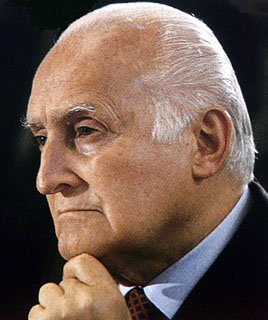Anti-Mafia former Christian Democrat is Italy's 12th President
 |
| Sergio Mattarella, the 12th President of the Italian Republic |
Mattarella went into politics after the assassination of his
brother, Piersanti, by the Mafia in 1980. His brother had been killed while
holding the position of President of the Regional Government of Sicily.
Their father, Bernardo Mattarella, was an anti-Fascist, who
with other prominent Catholic politicians helped found the Christian Democrat (Democrazia Cristiana) party. They dominated the Italian political scene for almost 50 years, with
Bernardo serving as a minister several times. Piersanti Mattarella was also a
Christian Democrat politician.
Sergio Mattarella graduated in Law from the Sapienza
University of Rome and a few years later
started teaching parliamentary procedure at the University of Palermo.
His parliamentary career began in 1983 when he was elected a
member of the Chamber of Deputies in a left-leaning faction of the DC that had
supported an agreement with the Italian Communist Party led by Enrico
Berlinguer. The following year he was entrusted with cleansing the Sicilian
faction of the party from Mafia control by DC Secretary Ciriaco De Mita.
 |
| Mattarella's brother, Piersanti, was killed by the Mafia |
Mattarella was appointed Minister for Parliamentary Affairs
and subsequently Minister of Education.
He stood down from his post, along with other ministers, in
1990 when parliament passed an act liberalising the media sector in Italy,
which he saw as a favour to media magnate Silvio Berlusconi.
Mattarella became
director of the Christian Democrat newspaper, Il Popolo, and in 1994 when DC
was dissolved following Tangentopoli, he helped form the Italian People’s
party.
Mattarella was one of the first supporters of the economist,
Romano Prodi, at the head of the centre left coalition known as The Olive Tree.
Two years later he was appointed Deputy Prime Minister and
Minister of Defence in the Government of Massimo D’Alema, the leader of the
Democrats of the Left.
 |
| Mattarella with his predecessor Giorgio Napoletano |
He was elected to be a Judge of the Constitutional Court in
2011 and served for nearly four years.
His wife, Marisa
Chiazzese, the mother of his three children, died in 2012.
Mattarella was elected President of the Italian Republic in
2015, replacing Giorgio Napoletano who had served for nine years.
In December 2016 the Prime Minister, Matteo Renzi announced
his resignation following the rejection of his proposals in the 2016 Italian
constitutional referendum and Matterella appointed the Minister of Foreign
Affairs, Paolo Gentiloni, to be the new head of Government.
Palermo, where Mattarella was born and where he taught at
the University, is the capital of Sicily, on the northern coast of the island,
with a wealth of beautiful architecture, revealing both northern European and
Arabian influences. The Church of San Cataldo in Piazza Bellini has a bell
tower typical of those in northern France and three spherical, red domes on the
roof of Arabic style.
President Sergio Mattarella lives in Palazzo Quirinale in
Rome at one end of Piazza del Quirinale. This was the summer palace of the
popes until 1870 when it became the palace of the Kings of the newly unified
Italy. Following the abdication of the last King, it became the official
residence of the President of the Republic in 1947.





